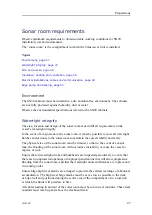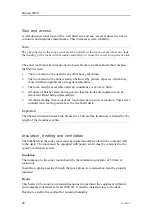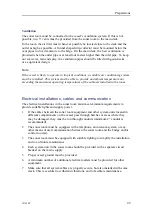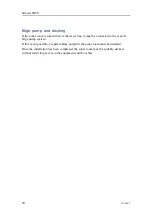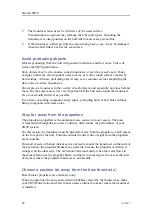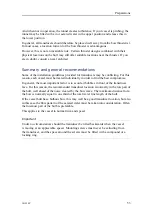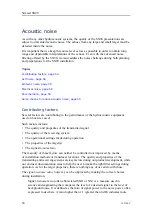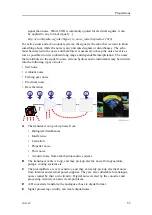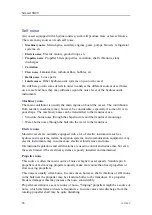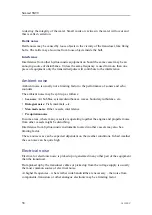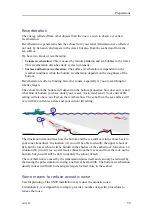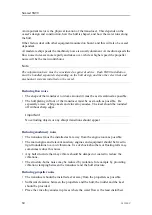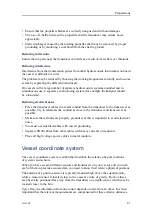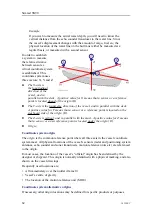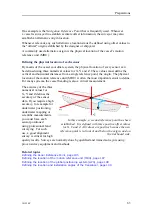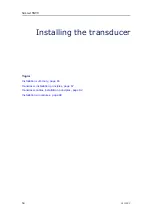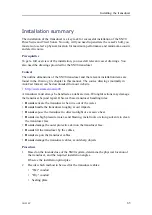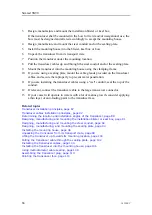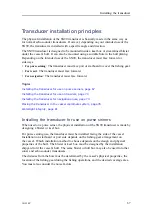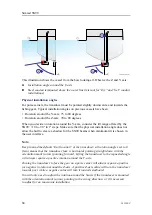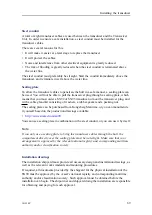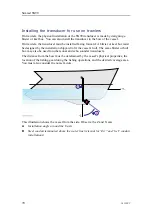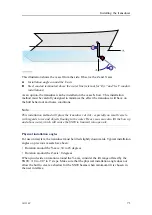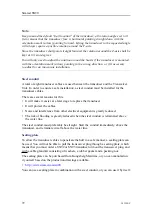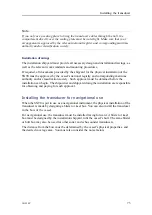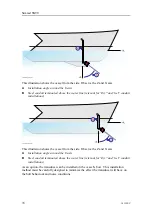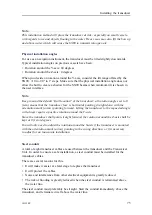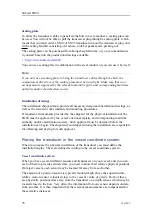
381298/C
61
• Ensure that the propellers blades are correctly designed and without damages.
• The use of a baffle between the propellers and the transducer may reduce noise
appreciably.
• Static discharges caused by the rotating propeller shaft may be removed by proper
grounding or by mounting a coal brush from the shaft to ground.
Reducing rattle noise
Ensure that no parts near the transducer can rattle as a result of water flow or vibrations.
Reducing interference
Interference from the transmission pulses from other hydroacoustic instruments on board
the vessel is difficult to avoid.
The problem may be reduced by choosing the working frequencies carefully and to some
extent by separating the different transducers.
On vessels with a large number of separate hydroacoustic systems installed and in
simultaneous use, a separate synchronizing system (for example the
K-Sync
) should
be considered.
Reducing electrical noise
• Place the transducer cables in a metal conduit from the transducer to the transceiver as
possible. Try to terminate the conduit as close to the transducer and transceiver as
possible.
• Make sure that all units are properly grounded, as this is important to avoid electrical
noise.
• You must use shielded cables with correct grounding.
• Separate SN90 cables from other cables with heavy currents or transients.
• Place all high voltage power cables in metal conduits.
Vessel coordinate system
The vessel coordinate system is established to define the relative physical locations
of systems and sensors.
When you have several different sensors and transducers on your vessel, and you wish
each of them to provide accurate data, you need to know their relative physical positions.
The antenna of a position sensor is typically mounted high above the superstructure,
while a motion sensor is located close to the vessel’s centre of gravity. Both of these
are physically positioned far away from the transducer on a depth sensor, which may be
located closer to the bow.
Very often, the information from one sensor depends on data from an other. It is then
important that the relevant measurements are compensated for these relative distances.
Summary of Contents for Simrad SN90
Page 2: ......
Page 117: ...381298 C 115 Related topics Installation summary page 65 Installing the transducer ...
Page 236: ...234 381298 C 372915 Clamping frame Simrad SN90 ...
Page 295: ......
Page 296: ... 2016Kongsberg Maritime ISBN 978 82 8066 179 1 ...
Page 297: ......

